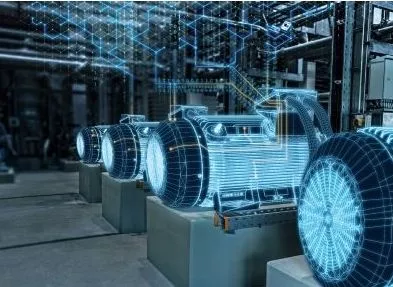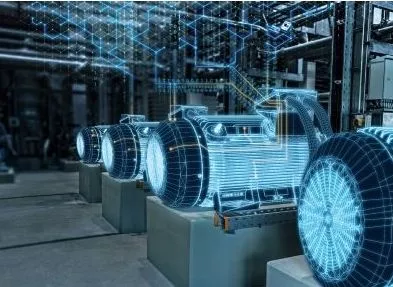Why does the predictive maintenance program fail?(Part 2)
Alpha Ind. Tech.
Training and cooperation
Ongoing training is a very important part of successful predictive maintenance projects. However, the training needs to be presented in the right way: a combination of free technical and management knowledge training. The so-called ISO and ASNT vibration certification courses are mainly for the comprehensive technology of rotor dynamics and vibration. It is very important to take these courses, pass the exam and get the certification, but if only this kind of separate training, does not necessarily lead to the successful implementation of the predictive maintenance project.
Equipment vendor training is often very useful because it helps students learn how to use data collectors and set up the software correctly, but it is usually limited to this and does not extend to how to use these tools to successfully conduct predictive maintenance projects. However, learning how to use the data collection tool is only a basic technology. If the user does not know how to process the collected data or how to successfully implement the predictive maintenance project, it usually means the project fails. One thing to note about the training provided by the supplier is that once the training is over, no one usually confirms that the tool is being used correctly. However, in response to this, ALPHA solves this problem by adopting the cloud system to Predictive maintenance, and receives the real-time data in the cloud system for auxiliary use. Through the analysis and control of expert personnel, timely advice is given to avoid information unequal, and the problems at the scene cannot be solved.

On-site training, database inspection, program review, and selection of suitable long-term stable partners or predictive maintenance service providers will be of great help in ensuring the success of predictive maintenance projects. If done well, the service partner will provide on-site technical training and provide technical support at different stages for your current project management. In some cases, a good partner will take over some of the projects and provide training and support so that you can take over these projects and continue to run predictive maintenance better.
Lack of procedures/methods
Just mentioned that in the last section, a successful predictive project is not just about analyzing graphs and data, it depends on consistency and repeatability. In general, we monitor equipment to diagnose the health of the equipment and other faults. In order to do this accurately, we need to do it in a repeatable manner year after year, month after month. With this in mind, you will see that the success of a predictive maintenance program is not only about technical capabilities, but more importantly, on project consistency and program management. In other words, the success of predictive maintenance projects often depends on the method and organization. A well-documented partner or service provider should be able to leverage their proven methods and management experience to help you achieve predictive maintenance projects.
Lack of experience/responsibility
So far, we have explored many different aspects of the success or failure of predictive maintenance. Perhaps we can now clearly see that it involves multiple issues, which also highlights another problem, that is, in a particular, the factory may just be inexperienced or responsible. Even with clear goals and highest levels of responsibility, it may take a long time to develop how to successfully implement predictive maintenance. At the same time, in the process of improving their learning, they may also encounter some setbacks or directional errors.
More typically, the factory wants to achieve ambitious goals but does not want to invest any manpower or material resources into predictive maintenance projects, or they want to achieve this or that goal, but all of these goals are only temporary. During this period, changes in company strategy or personnel changes will lead to the suspension of the project. As with other technologies in the world today, predictive maintenance technology is becoming a field of expertise that requires a lot of experience. If one wants to get first-class predictive maintenance techniques and experience, it takes a lot of time to accumulate and research. However, unfortunately, this is likely to conflict with your other job responsibilities. This is one of the reasons why predictive maintenance outsourcing has become another option for many plants.
Can intelligent management solve the problem?
The material management system developed by ALPHA establishes the equipment file, obtains the parameters of the equipment through the QR code, and the maintenance record of the equipment, the maintenance plan, and the next maintenance plan is pushed to the relevant personnel mobile phone, WeChat, etc. in advance. And the various parts of the equipment are stored in the warehouse, and the warehousing and delivery records are recorded in real time. Different types of models use separate statistics, which can generate monthly and annual reports, and more intuitive analysis of consumption.
Optimize inventory, insufficient inventory, automatically push purchase reminders, generate purchase lists, optimize supply chain stability and efficiency, and completely avoid affecting normal production. And most importantly, the inventory spare parts management system, combined with the monitoring and predictive maintenance system, to generate solutions, through the continuous learning and application of the system, the inventory parts through the system call data, in the early warning time to complete the preparation of related accessories, more convenient, Improve efficiency. But most importantly, the system needs enough data to be more and more accurate in different application scenarios.

The answer is yes, but the learning and management of the people we have been talking about, especially in the early stage, played a major role.
In conclusion
Through this series of brief introductions, perhaps we have a clearer understanding of the advantages of predictive maintenance service outsourcing. While many companies have in-house experts to develop and maintain high-quality predictive maintenance, there are also companies that may benefit from predictive maintenance outsourcing services or benefit from predictive maintenance programs faster. Of course, for the decision to outsource, each company needs to conduct a detailed analysis.
Service providers often understand the technologies they implement and have considerable experience in how to successfully manage predictive maintenance projects over the long term. They know what is necessary to successfully carry out a predictive maintenance program, and then special training can be provided for these issues. Service providers should be consistent throughout the cycle and be able to provide the expertise that is right for the customer's company. Part of the reason is that customers are usually fully convinced of the technology they are using. Finally, the service provider should be able to work with you to set the project baseline and verify the return on investment for the entire cycle.
In more articles, we will explore these issues in more depth to provide you with enough practical information to better carry out predictive maintenance projects or to find the right partner/service provider to help you with predictive maintenance. project. In both cases, understanding why a project fails can be the key to successful predictive maintenance.
For more information about ALPHA's Intelligence service cooperation, please contact us.


